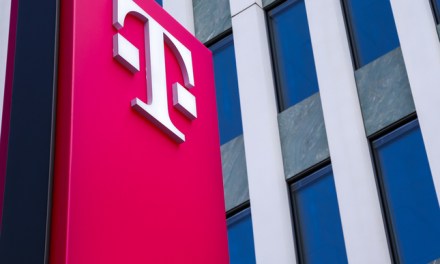Viewpoint
Dan Bloch, Senior Vice President of Global Solutions at Calix, shares his insights on how independent fibre-to-the-premise (FTTP) providers can win the customer acquisition battle and unleash their brand’s potential.
Independent and alternative network operators, or altnets, will play a key role in building out a modern digital infrastructure. As altnets continue to construct fibre networks, they are also expanding their focus to subscriber acquisition—and for good reason.
“A fibre network is an amazing community asset, especially in areas that have been traditionally under-served or ignored altogether,” says Bloch. “When these networks are built using public funds, the return on investment is the building of the infrastructure itself, and success is measured by how many homes are passed. But when private funding comes into play, investors want to see financial returns. Their measure of success is defined by profitability and long-term monetisation, and the first step towards that is to connect as many homes as possible.”
Building a Winning Brand
How can altnets adapt their business models to make this shift successfully? According to Bloch, it’s all about the brand. The first step is to build brand awareness and trust that will attract and retain subscribers with value-added offerings once the network is deployed. To date, this has taken a backseat to building the actual network.
“Most altnets I’ve spoken with have been initially focused on homes passed as their funding was targeted on network build. Adding subscribers took a backseat in terms of focus and now we are seeing that situation turn around as generating revenue is mandatory to ensure continued operations of the business. While intentions were always there, in reality, everything needs to happen in parallel,” says Bloch.
Just as important as adding subscribers is the ability to deliver on the brand’s promise at each customer touchpoint. This consistency will result in a strong, sustainable that will provide a competitive differentiator in an industry plagued by poor customer satisfaction: the average Net Promoter Score (NPS) for altnets in the United Kingdom is a dismal 12*.
“Users’ experiences are defined by how they use the networks, what they are doing while they are on them,” explains Bloch. He compares the network to a brand-new motorway with many lanes to accommodate a lot of traffic. He notes that in fact, like the Autobahn, the fibre network is capable of much higher speeds than other roads. But the driving experience is associated with the car they’re steering, rather than the road they’re on.
“No one driving on it knows which companies were involved in building it,” he says. “It is simply the roadway that enables the driver’s experience, which is largely dictated by the car they are in. For the builders of the motorway, they get no brand equity for that experience.”
While the natural inclination is to address this by focusing on speed and pricing, the results of a 2023 Calix survey of service providers indicate that this may not be the right strategy. Most subscribers purchase half a gigabit or less, which implies that speed is simply not enough of a differentiator.
Going Beyond Connectivity To Exceed Subscriber Expectations
Instead, successful altnets making a splash in the market are customising the in-home subscriber experience by offering value-added services coupled with a persona mindset. That means appealing to consumers based on what they care about. And it seems that subscribers are willing to pay for this level of personalisation. According to an Omdia Digital Consumer Insights Survey, subscribers in the United Kingdom said they would pay extra for:
- Work-from-home service and plans (55%)
- Cybersecurity options (51%)
- Advanced Wi-Fi management capabilities (45%)
- Tech support for all connected devices (43%)
- Prioritised video streaming (40%)
- A better gaming experience (35%)
A unified broadband platform, such as Calix Cloud, that enables you to partner with known entities to deliver third-party, value-added services and grow your business is key, says Bloch. “Your platform must deliver the capabilities you need to sustain service delivery, keep operating costs at bay, and engage with subscribers to attract, retain, and nurture these relationships.”
This includes services for small businesses currently leveraging enterprise offerings that may not meet their unique needs. Altnets made the investment to pull fibre into areas that are made up of homes, businesses, and communities. To maximise the return on investment, every possible endpoint should be connected to that infrastructure to increase network penetration and revenue.
Altnets don’t need to spend millions of dollars on advertising to achieve success either, emphasises Bloch. For example, the Calix platform provides a content marketing toolkit that includes award-winning marketing content with more than 5,000 pieces of digital content that can be branded with the broadband service provider’s logo and colour scheme to help them drive successful campaigns.
Bloch underscored the changing landscape and opportunities it provides for altnets, likening it to his company’s own journey over the past two decades. “Calix has evolved from a network-first focus to a more holistic approach that places value-added services and persona-based marketing at the forefront of the subscriber experience,” he says. “We are committed to this win-win strategy that will help altnets drive acquisition, growth, and retention.”
*Source: Ofcom report UKRN: Moving Forward Together – Performance Scorecards 2021.

Dan Bloch, SVP Global Solutions at Calix
















